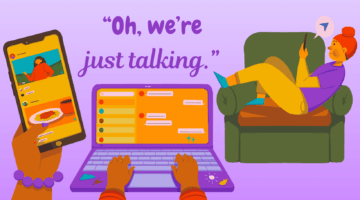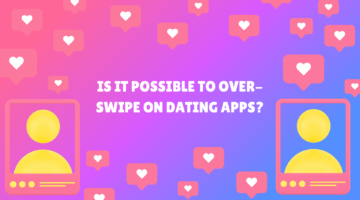How Does Having a ‘Friend With Benefits’ Usually Work Out?
June 24, 2020 by Justin Lehmiller
When I first got into sex research, I started studying friends with benefits (FWBs). I had been teaching college courses on human sexuality for a few years at that point and I often got questions on this subject, but there just wasn’t any research on it—so I decided to explore it.
I’ve published several papers on FWBs at this point, which I have written about before on the blog (see here and here). One of the key things we found in our work is that people get into these relationships for a wide range of reasons. As a result, we found that people often reported wildly different expectations for what they hoped would happen to their FWB in the future. Some people said they wanted to become romantic partners, others hoped to go back to being friends, and yet others just wanted to stay FWBs for as long as possible.
All of this variability led us to wonder what ultimately happens to FWBs over time and what the most likely outcome is. So we decided to conduct a one-year longitudinal study of FWBs to find out the answer, and the study was just published in the journal Personal Relationships [1].
In the end, we studied 192 people who reported having a FWB. We surveyed them at two different points in time, spaced apart by about one year. The sample was predominately female-identified (70%), White (74%), and heterosexual (72%), with an average age of 30. Participants reported that they had known their FWB in some capacity for about three years on average at the start of the study.
In the first survey, participants were asked what they hoped would happen with their FWB in the future. They were also asked how satisfied they were with their relationship and how much they communicated about relationship rules and boundaries. In the second survey, we asked whether the nature of their relationship was the same or if it had changed—and, if so, why.
We found that some relationship outcomes were more likely than others. After one year, 26% were still FWBs, 15% had become romantic partners, 28% had gone back to being just friends, and 31% reported having no relationship of any kind with their former FWB. Put another way, the vast majority of FWBs dissolved over the course of the year. However, most participants still maintained at least some type of relationship with the other person, with about 1 in 3 cutting off all contact
We also found that some relationship goals seemed more attainable than others. Specifically, those who wanted to go back to being just friends appeared to be the most successful: 59% of those who desired that outcome at Time 1 attained it at Time 2.
Those who wanted to remain FWBs long-term were somewhat less successful, with 40% of those desiring it at Time 1 reporting that they were still FWBs at Time 2.
Lastly, those who wanted to transition into romantic partners were the least successful, with just 15% of those who initially wanted that outcome getting it after one year.
One of the other key things we found was that among those participants who reported maintaining at least some kind of relationship with their partner over time—whether it was sexual or non-sexual—reported more communication about setting ground rules at Time 1. Those who were less communicative were more likely to report having no relationship whatsoever at Time 2.
We found a similar pattern of results for friendship satisfaction: those who were happier with their friendship at the outset were more likely to maintain some sort of relationship over time.
Also, when we asked people who were no longer FWBs at Time 2 to describe why they thought things didn’t work out, the most commonly endorsed reasons were that they didn’t communicate enough in the beginning and that they wanted different things from the relationship.
While these findings certainly aren’t representative of all FWBs and more research on this topic is warranted, they do suggest a few important conclusions. One is that most FWBs appear to be pretty temporary and either dissolve or change form in less than one year. Also, it appears that some people are more successful at getting what they want out of FWBs than others.
Bottom line: according to our research, the real key to making FWBs work seems to have a lot to do with matching expectations, excellent communication, and a solid friendship to start.
Want to learn more about Sex and Psychology? Click here for more from the blog or here to listen to the podcast. Follow Sex and Psychology on Facebook, Twitter (@JustinLehmiller), or Reddit to receive updates. You can also follow Dr. Lehmiller on YouTube and Instagram.
[1] Machia, L. V., Proulx, M. L., Ioerger, M., & Lehmiller, J. J. (2020). A longitudinal study of friends with benefits relationships. Personal Relationships, 27(1), 47-60.
Image Credit: 123RF
You Might Also Like:

Dr. Justin Lehmiller
Founder & Owner of Sex and PsychologyDr. Justin Lehmiller is a social psychologist and Research Fellow at The Kinsey Institute. He runs the Sex and Psychology blog and podcast and is author of the popular book Tell Me What You Want. Dr. Lehmiller is an award-winning educator, and a prolific researcher who has published more than 50 academic works.
Read full bio >


